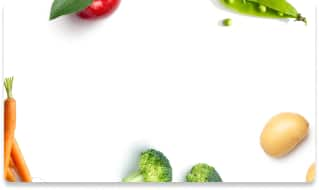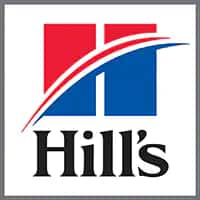
-
Find the right food for your petTake this quiz to see which food may be the best for your furry friend.Find the right food for your petTake this quiz to see which food may be the best for your furry friend.Featured products
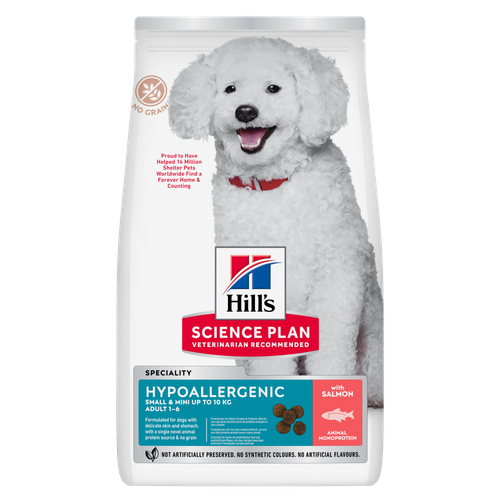 Hypoallergenic Small & Mini Adult Dog Food
Hypoallergenic Small & Mini Adult Dog FoodHILL'S SCIENCE PLAN Hypoallergenic Small&Mini Adult dog food with Salmon is complete pet food for adult small dogs 1–6 years old. It's formulated for dogs with delicate skin and stomach, with limited high quality novel protein sources & no grain.
Shop Now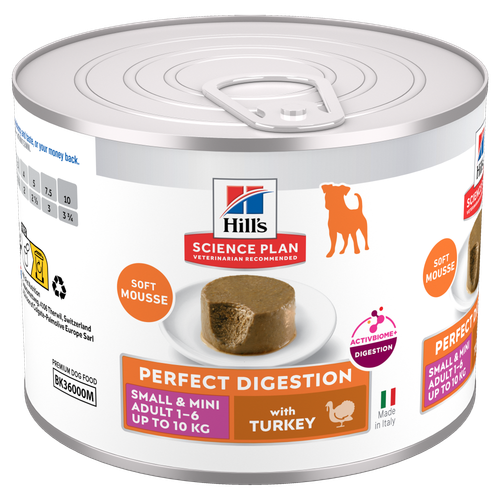 Perfect Digestion Small & Mini Adult Dog Food
Perfect Digestion Small & Mini Adult Dog FoodHill's Science Plan Perfect Digestion Small & Mini Adult Dog Food with Turkey is a complete premium pet food for small breed adult dogs aged 1–6 years. This deliciously smooth mousse is precisely balanced to deliver the appropriate amount of energy and to support digestive health in adult, small breed dogs.
Shop Now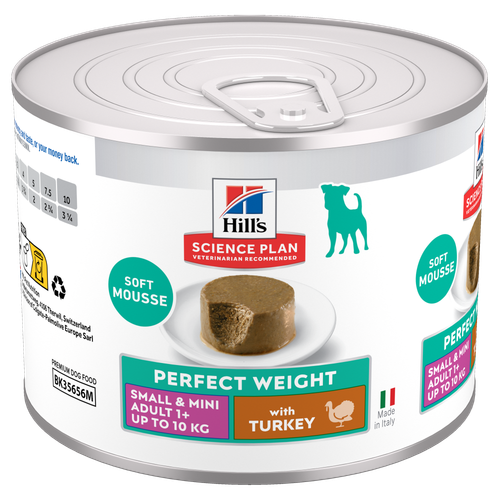 Perfect Weight Small & Mini Adult Dog Food
Perfect Weight Small & Mini Adult Dog FoodHill's Science Plan Adult Small & Mini Dog Food with Turkey is a complete premium pet food for adult small dogs from 1 year old that are prone to weight gain or slightly overweight. This deliciously smooth mousse is formulated to deliver the appropriate amount of energy to support weight maintenance in adult dogs.
Shop NowFeatured products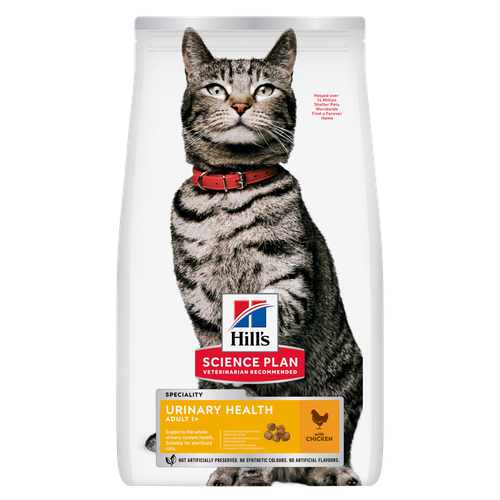 Urinary Health Adult Cat Food with Chicken
Urinary Health Adult Cat Food with ChickenHill's Science Plan Urinary Health Adult Cat Food with Chicken supports the health of the whole urinary system. Suitable for sterilised cats.
Shop Now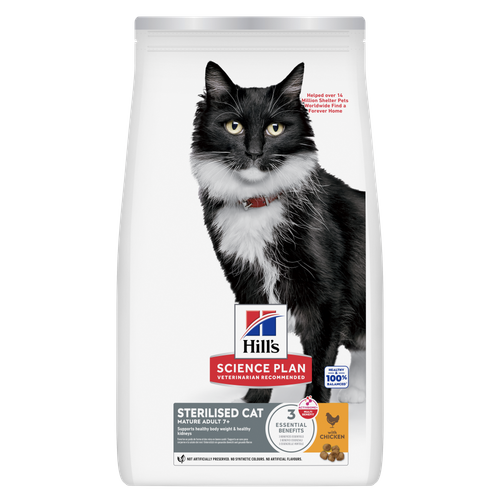 Sterilised Mature Adult Cat Food
Sterilised Mature Adult Cat FoodHill's Science Plan Sterilised Cat Mature Adult Cat Food with Chicken is specially formulated with ActivBiome+ Multi-Benefit Technology. It is a precisely balanced nutrition tailored to meet the needs of mature adult sterilised cats, ages 7+, and to promote graceful ageing.
Shop Now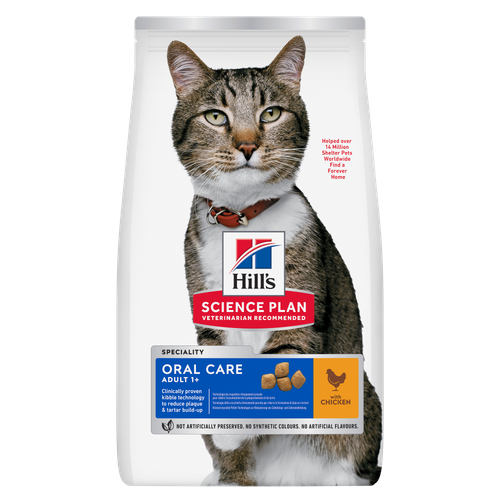 Oral Care Adult Cat Food
Oral Care Adult Cat FoodHill's Science Plan Oral Care Adult Cat Food with Chicken contains clinically proven kibble technology to reduce plaque & tartar build up.
Shop Now -
Dog
- Dog Tips & Articles
-
Health Category
- Weight
- Food & Environmental Sensitivities
- Urinary
- Digestive
- Joint
- Kidney
-
Life Stage
- Puppy Nutrition
- Adult Nutrition
- Senior Nutrition
Cat- Cat Tips & Articles
-
Health Category
- Weight
- Skin & Food Sensitivities
- Urinary
- Digestive
- Kidney
-
Life Stage
- Kitten Nutrition
- Adult Nutrition
Featured articles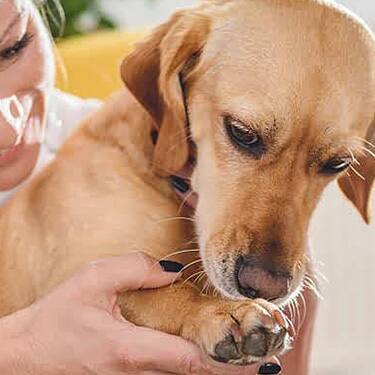 Virtual Vet Visits: What You Need to Know
Virtual Vet Visits: What You Need to KnowLearn the ins and outs of a televet appointment before you talk to a vet online.
Read More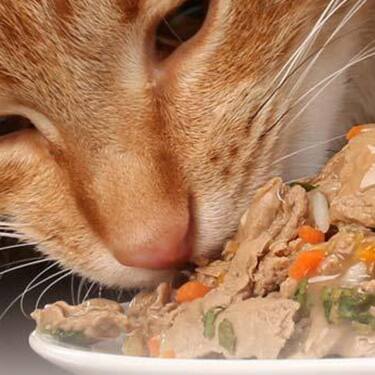 Tips For Mixing Wet And Dry Pet Food
Tips For Mixing Wet And Dry Pet FoodDiscover tips for mixing wet and dry pet food to ensure balanced nutrition and variety for your pet. For comprehensive feeding advice, visit Hill's Pet UK.
Read More Develop your gut instinct | Hill's Pet
Develop your gut instinct | Hill's PetDigestive disorders can affect any part of the digestive system, from the stomach, small intestine and through to the large intestine.
Read More -


We all look forward to the arrival of warmer weather. We can indulge in more outdoor adventures with our dogs, and our cats can find even more sunny spots in which to lounge while they dream the day away. But just as it is for us, as the temperature goes up, so does your pet’s thirst and need for water.
It’s always good to make sure you have several bowls of water dotted around the house and garden so that it’s never far away, but our pets do inevitably drink from other places, too. You may see your cat or dog drinking from puddles or your pond. Out on walks, you might see your dog drinking out of ditches and other such places. But is this safe? As a pet parent, you want your furry friend to stay hydrated — and healthy. Here's what you need to know about your canine and feline friends' daily water needs and the various sources they might sniff out to quench that thirst.
How much water do pets need?
On average, the normal water intake for cats and dogs is 25-50 ml per kilogram of bodyweight per 24 hours. This means that a medium-sized dog of 20kg would normally drink between half and one litre of water per day. On the other hand, an average-seized 4kg cat would only consume 100-200 ml per day.
Pets living in warmer climates or those who are very active may need more, while pets who eat moist foods, are older, or are sedentary will likely consume a bit below the average.
Whatever your pet’s age and lifestyle, the safest way to make sure they have enough water is to ensure they always have access to a clean, fresh supply. The more clean water bowls they have access to across their territory, the better! This is particularly important in multi-cat houses, where some cats might be too timid to go near a water bowl being defended by another cat. Ideally, you should have one more water bowl than the number of cats and they should be in different places.
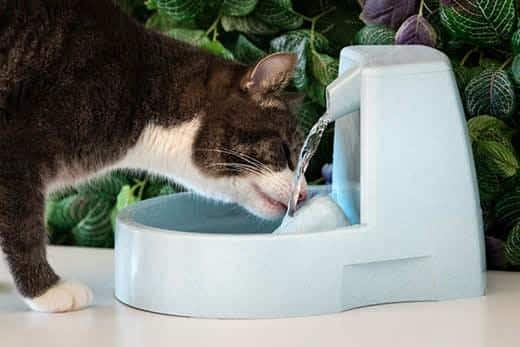


Tasty Tips
Young pets may need several visits in their first year for vaccinations. Adult pets generally benefit from annual check-ups, while senior or special-needs pets might require more frequent visits.
10 common water sources: Are they safe?
Whether they're inside the home or spending time outside in nature, your pet has a nose for water. If they sniff out one of these water sources and go in for a drink, here's what you need to know.
1. Bottled water
Bottled water is safe to share with cats and dogs. Opt for spring water or bottled tap water varieties and steer clear of sparkling water, which may have added ingredients and cause discomfort.
2. Pond, ditch or river water
Whether you're wandering the paths at the local park or enjoying a camping trip together, it's not uncommon for your thirsty dog to start lapping at bodies of water. The problem with ponds and ditches is that the water is usually stagnant, meaning it is not free-flowing. Stagnant water may carry substances or diseases that can make your pet sick, such as Leptospirosis, algae, or bacteria that lingers in standing water and mud. It's best to avoid this type of water for pet drinks.
Having said this, dogs have largely evolved to eat and drink things that we would find unsavoury. This means most of them have much more robust digestive tracts than us, and they will be acclimated to different bacteria. So while you might try to guide your dog away from a ditch or pond, if they have already jumped in and had a drink by the time you catch up, there is probably no need to panic! Ensuring your dog’s vaccinations are up to date can help reduce the risks of diseases like Leptospirosis.
Free-flowing rivers and streams are generally safe if the water looks clear and clean. There’s always a small risk that the water might be contaminated from something upstream but, in general, free-flowing, clear water is much less risky than standing water.
3. Fish pond or tank water
Whether you let your dog or cat drink from your pond is up to you. If your pond is freshly filtered with a pump keeping the water clean, there is no reason not to let them. If you use chemicals, though, it’s probably better to cover the pond so that large volumes can’t be ingested.
You may also prefer your cat doesn’t go fishing for your best Koi carp! Speaking of fish, much the same applies to indoor fish tanks. If the water is clean and untreated, it’s fine for your pets, but you may still prefer to keep the tank covered to protect your fish.
4. Sea water
When you head to the beach, your dog might love to frolic in the gentle waves. But what about dogs drinking water from the sea? Sea water is naturally salty. If your pet drinks this water, they can get salt poisoning, also known as hypernatraemia, which is a serious condition that can show itself through vomiting, diarrhoea and tremors. Instead of relying on the ocean as a water source, pack plenty of bottles of tap water from your home for your pet.
5. Pool water
Public and home pools are treated with salt and chemicals such as chlorine to keep bacteria and algae levels low for swimmers. Although we humans accidentally swallow a small amount of pool water when we swim and splash around, it’s not ideal for your dog to actively set out to drink large amounts. Bring fresh drinking water to keep them hydrated.
6. Puddle water
Puddles are often a very welcome source of water for a thirsty dog, and the vast majority of them will be safe because they’re simply rain water. Yes, they might be muddy! But as we said, dogs’ stomachs are used to coping with a bit of dirt. However, try to avoid puddles that look like they might be contaminated with things like leaks from cars or run-off from car washes.
7. Shared/community water bowls
When you're out and about with your dog, perhaps at a pet store or a dog-friendly cafe patio, it's common to see a community water bowl for all dog visitors to use. But should you let your dog join the masses? If you can fill the bowl yourself from a tap water system and the bowl seems clean, go ahead and let them have a slurp. If you can’t change the water, just use your judgement. If a few dogs have passed by it shouldn’t be a problem, even if it’s got a bit of debris in it. But if it looks really foul or is full of saliva, give it a miss
8. Tap water/water fountains
This is your best option for providing fresh water for your pet. Tap water has been cleaned and prepared for human consumption, bathing and washing.
9. Toilet water
No pet should rely on toilet bowl water for their water source. If your pet is simply curious, keep the lid down. They could accidentally lap up human waste, chemically treated toilet bowl water, or lingering bathroom cleaner — all of which are sure to make your pet ill.
10. Well water
Live in a rural area? If your home is plumbed with well water, and it's safe for you to drink, it's also good for your pets. However, if you have a farm pump and use well water exclusively for outside livestock, regularly test the water quality to ensure no contaminants are leaking into the aquifer.
Clean water is essential for pets
If you're ever unsure if your pet should drink from a water source, ask yourself if you'd take a sip. Does the water look clean? Is it fresh? Clear? If you can't say yes to these questions, it's likely not a good idea for your pet either. Next time you head out with your dog, take enough water for both of you. And if you see your cat eyeing the toilet bowl, check their water bowl. Does it need a rinse and refill? Everyone loves a drink of fresh, cool water — pets included.


Angela Tague is a pet mom and writer living in the Midwest. When she's not making a mess in the kitchen, exploring nature trails with her dog, or attending a yoga workshop, she's writing full-time for multiple lifestyle and technology brands. You can find her on Twitter and LinkedIn @AngelaTague.
Related products

HILL'S SCIENCE PLAN Hypoallergenic Small&Mini Adult dog food with Salmon is complete pet food for adult small dogs 1–6 years old. It's formulated for dogs with delicate skin and stomach, with limited high quality novel protein sources & no grain.
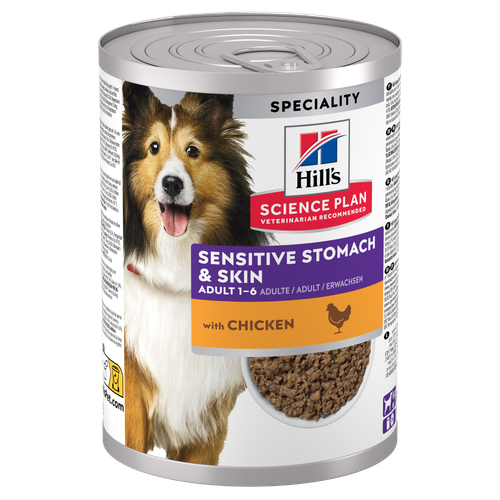
Hill's Science Plan Sensitive Stomach & Skin Adult Wet Dog Food with Chicken is a complete premium dog food for adult dogs from 1 year. This savoury tinned loaf is enriched with ingredients that support digestive health & skin care.

Hill's Science Plan Adult Small & Mini Dog Food with Turkey is a complete premium pet food for adult small dogs from 1 year old that are prone to weight gain or slightly overweight. This deliciously smooth mousse is formulated to deliver the appropriate amount of energy to support weight maintenance in adult dogs.

Hill's Science Plan Perfect Digestion Small & Mini Adult Dog Food with Turkey is a complete premium pet food for small breed adult dogs aged 1–6 years. This deliciously smooth mousse is precisely balanced to deliver the appropriate amount of energy and to support digestive health in adult, small breed dogs.
Related articles

Digestive disorders can affect any part of the digestive system, from the stomach, small intestine and through to the large intestine.

Discover tips for mixing wet and dry pet food to ensure balanced nutrition and variety for your pet. For comprehensive feeding advice, visit Hill's Pet UK.
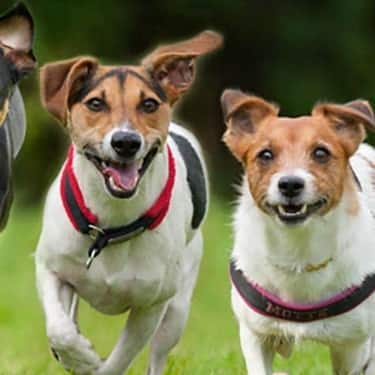
Monitoring your pet’s body condition score (BCS) can help you help your pet maintain proper growth and weight for a long, healthy life.

Learn the ins and outs of a televet appointment before you talk to a vet online.

Put your pet on a diet without them knowing
Our low calorie formula helps you control your pet's weight. It's packed with high-quality protein for building lean muscles, and made with purposeful ingredients for a flavourful, nutritious meal. Clinically proven antioxidants, Vitamin C+E, help promote a healthy immune system.
Put your pet on a diet without them knowing
Our low calorie formula helps you control your pet's weight. It's packed with high-quality protein for building lean muscles, and made with purposeful ingredients for a flavourful, nutritious meal. Clinically proven antioxidants, Vitamin C+E, help promote a healthy immune system.

